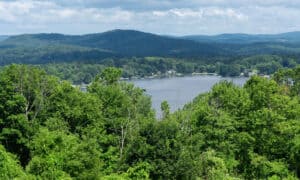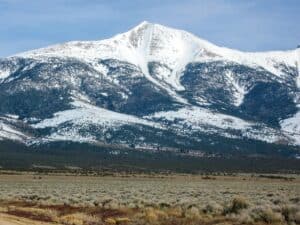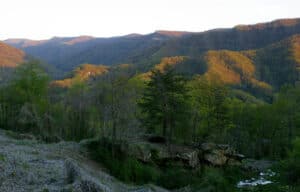New Hampshire is one of the smallest states in the U.S. and has one of the lowest populations, with fewer than 1.5 million residents calling the “granite state” home. New Hampshire is bordered by Vermont to the west, Maine to the north, and Massachusetts to the south. As a part of the northeastern region in the United States known as New England, New Hampshire is famous for having very dense forests, cold lakes, beautiful rural towns, and rolling hills. In a state of wooded hills, mountains, and valleys, the highest point in New Hampshire is found atop Mount Washington. This tall mountain peak is also home to some interesting and unusual creatures. Keep reading – the rest of this article dives into some of the fascinating plants and animals that call Mount Washington home!
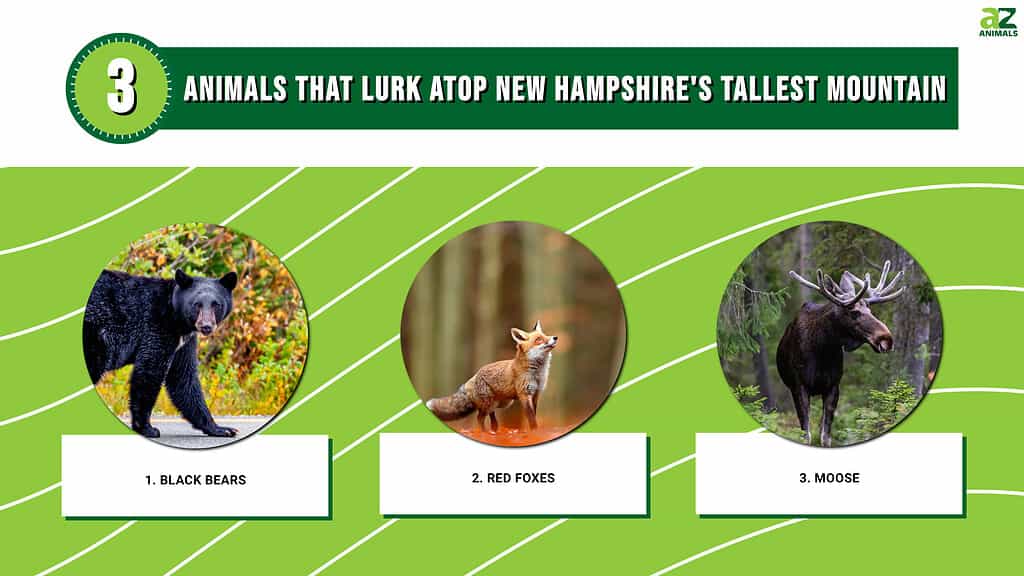
About Mount Washington
Not only is Mount Washington the tallest point in New Hampshire, but the mountain peak is also the highest point for miles beyond the state’s borders. In fact, Mount Washington is the highest point in all of New England, among the states of Connecticut, New Hampshire, Maine, Massachusetts, Rhode Island, and Vermont.
Mount Washington is a mountain in the Presidential Range in the White Mountains. Standing at 6,288 feet above sea level, this peak is the tallest in the White Mountains. It is also famous for having extreme wealth conditions, including strong winds and frigid temperatures. Even in the summer, climbing Mount Washington is not for the faint of heart. While it is possible to hike to the top, always watch the weather conditions, check the forest safety guidelines, and prepare the proper gear and food for your trek. If hiking is not your thing, consider taking the historic Mount Washington railway! The Mount Washington Cog Railway has climbed up to the top of Mount Washington since 1869. You can enjoy the historic route and beautiful views all the way to the top. Just book a ticket on one of the rail line’s trains!
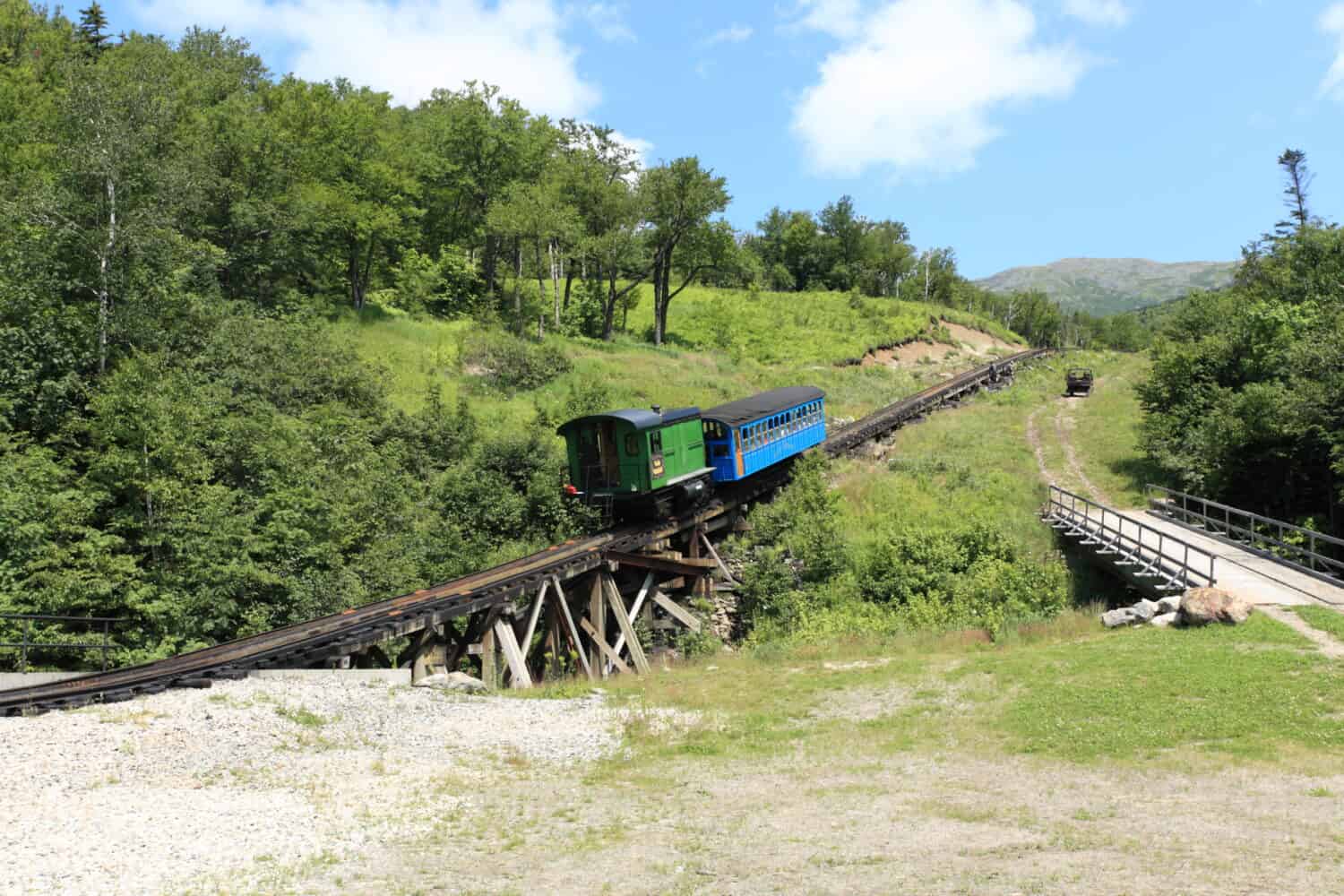
The cog railway takes visitors to the top of Mount Washington.
©KAZMAT/Shutterstock.com
Plants Growing on Mount Washington
Since you just read about the freezing, bitterly cold temperatures and windy conditions atop Mount Washington, you may wonder, “What kind of plants could possibly survive?” With warnings like “beware of the worst weather in the United States,” and reports of snow falling even in the summer months, you may picture a barren, deserted landscape. However, the reality could not be further from the truth. In fact, Mount Washington is part of the Alpine Zone in the White Mountain National Forest area. This area is actually teeming with unique and important plant life. As you ascend Mount Washington, you will find that you will travel through several distinct ecological zones: the northern hardwood forest, boreal forest, sub-alpine, and alpine zones.
Northern Hardwood Forest
Starting at the bottom of the mountain, the valley floor is forested, primarily of deciduous trees. This ecological zone is the northern hardwood forest. Look for sugar maple, red maple, red oak, white pine, birch, and other trees.
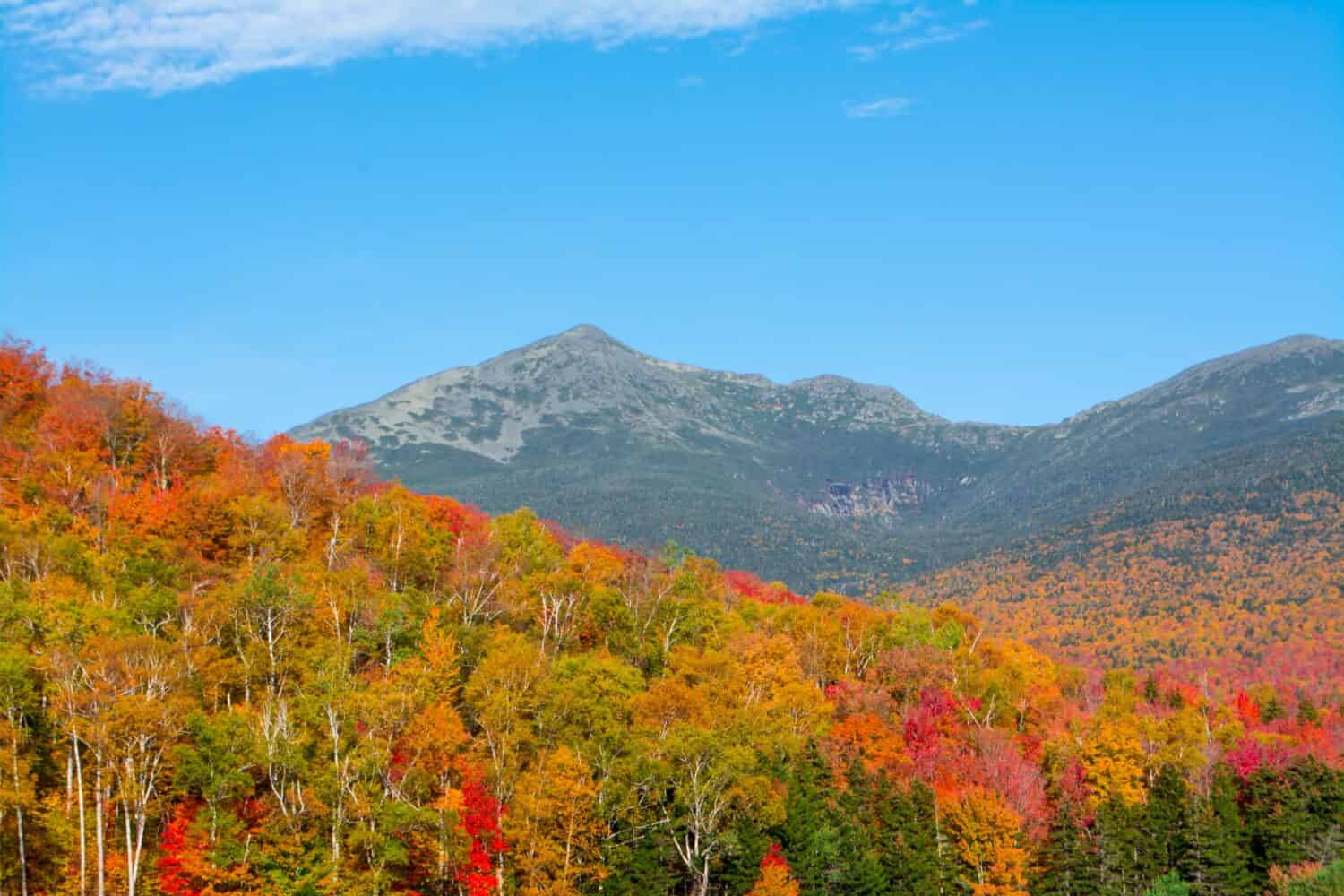
Trees that produce foliage in a range of bright colors grow near the base of Mount Washington, in the northern hardwood forest zone.
©Brandon B/Shutterstock.com
Boreal Forest
Once you reach 2,000 feet above sea level, however, you may notice the trees start to change. At this point, you will see more spruce and fir trees. In this zone, which is called the boreal forest, the land is primarily wooded with evergreen trees, which are better able to survive in colder temperatures and shorter growing seasons because they do not have to replace their foliage each year. If you look on the ground, you may notice moss species and ferns.
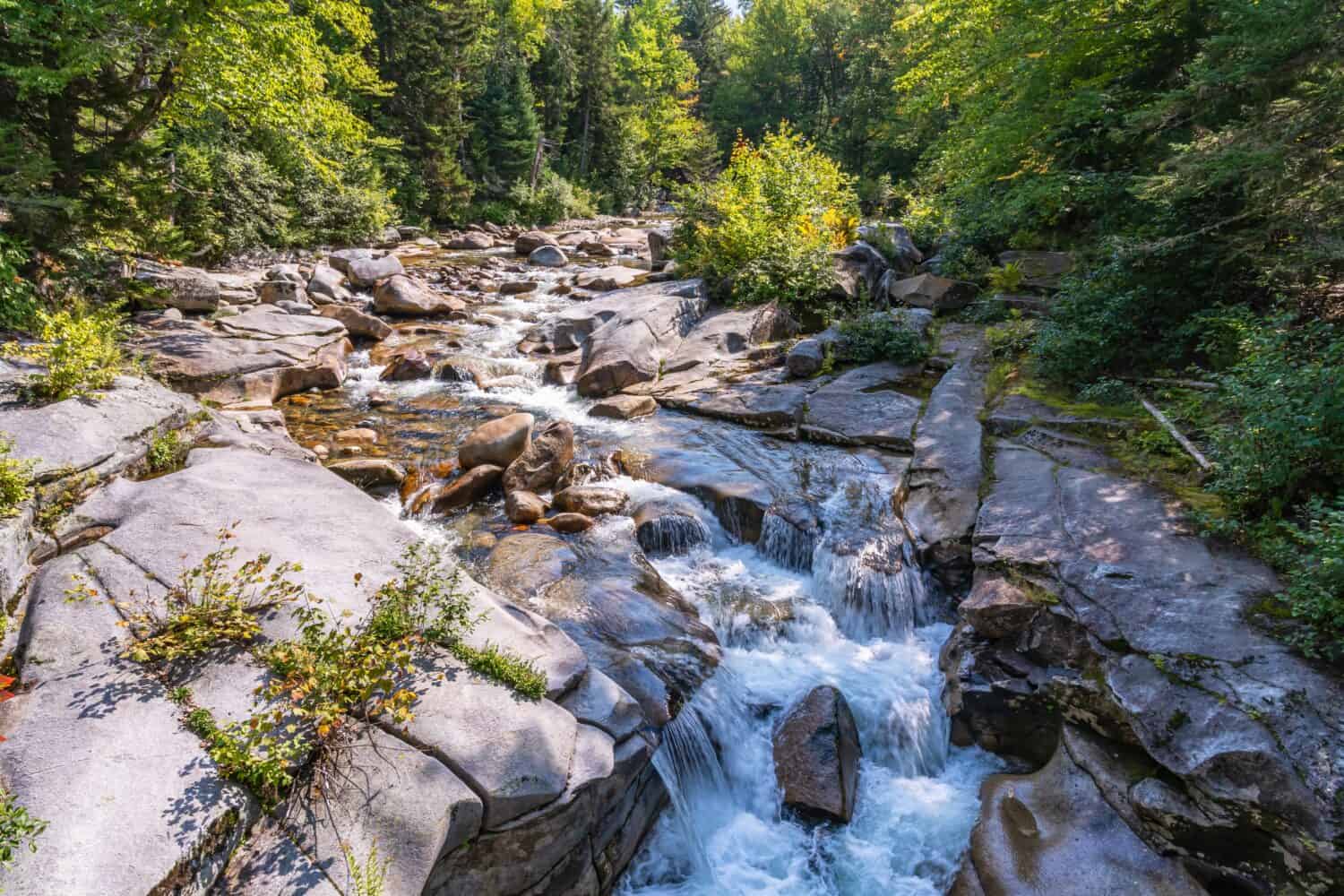
Spruce and fir trees grow higher up on Mount Washington, often between 2,000 and 4,000 feet above sea level. On the western slope of Mount Washington, trees grow near the small Ammonoosuc River.
©Sergey and Marina Pyataev/Shutterstock.com
Sub-Alpine Zone
As you begin climbing closer to the top of Mount Washington, you will eventually pass beyond 4,000 feet above sea level. At this point, you might notice that the trees start looking more barren and rugged. In this zone, the forest consists primarily of conifers, particularly fir and black spruce. In an increasingly stark growing zone, these trees can survive. This area is called the Sub-Alpine zone. There, the gnarly and small trees are called “krummholz,” which is a German word referring to their twisted appearance.
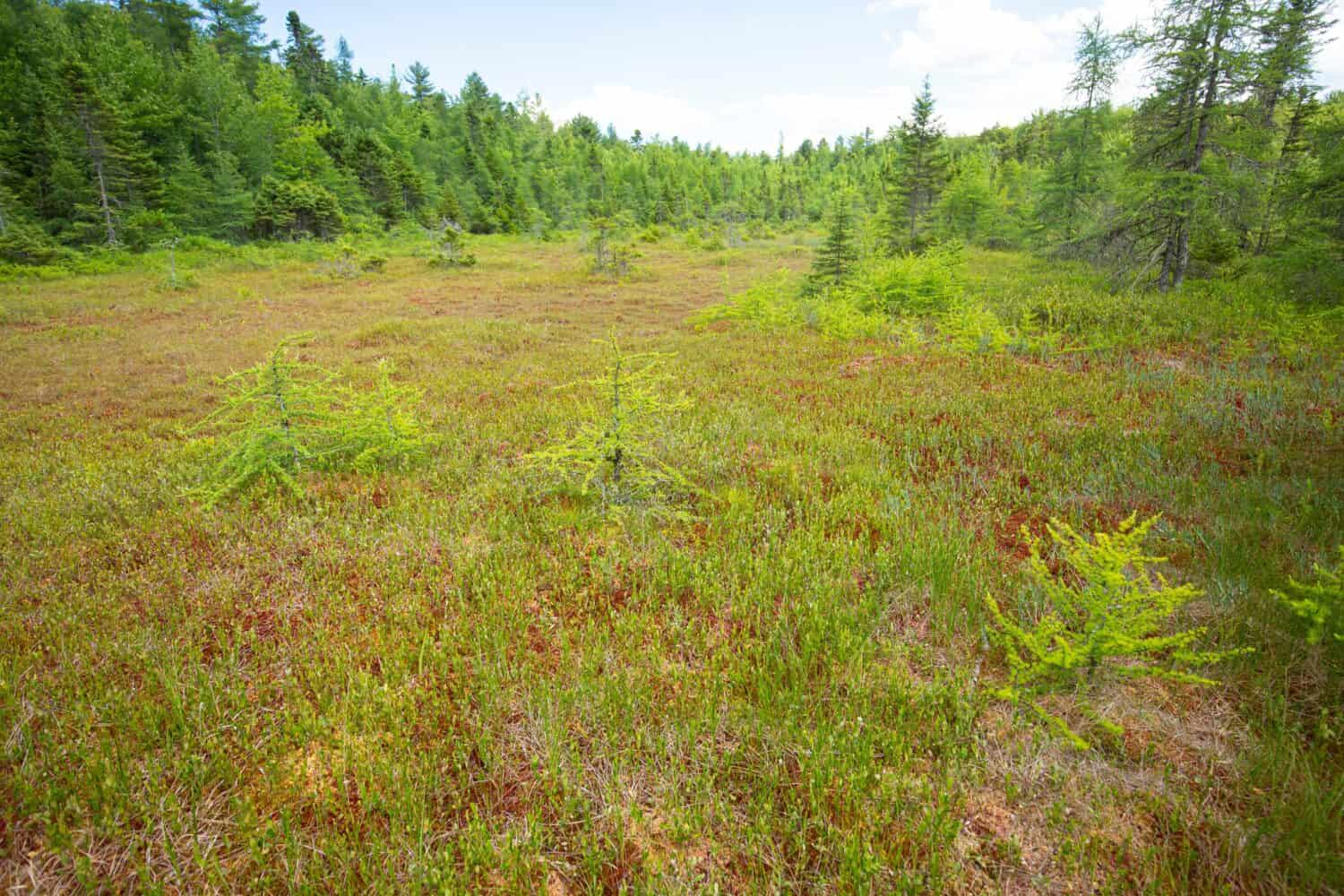
Black spruce trees grow throughout New Hampshire, including in Mount Washington.
©Jeff Holcombe/Shutterstock.com
Alpine Zone
Above 4,400 feet of elevation, you finally enter the Alpine zone. You will not see many trees here. Harsh winds, fog, and freezing cold temperatures last year round. Yet nevertheless, some plants still emerge from the mountain rocks. In the Alpine zone, the lucky visitor might see rare or endangered plants. These include the species Robbins cinquefoil, also known as dwarf cinquefoil, which only grows in the White Mountains of New Hampshire. This small, perennial member of the rose family is native to Mount Washington. You can also look for other plants such as Diapensia lapponica, mountain cranberry, Bigelow’s sedge, and Lapland rosebay.
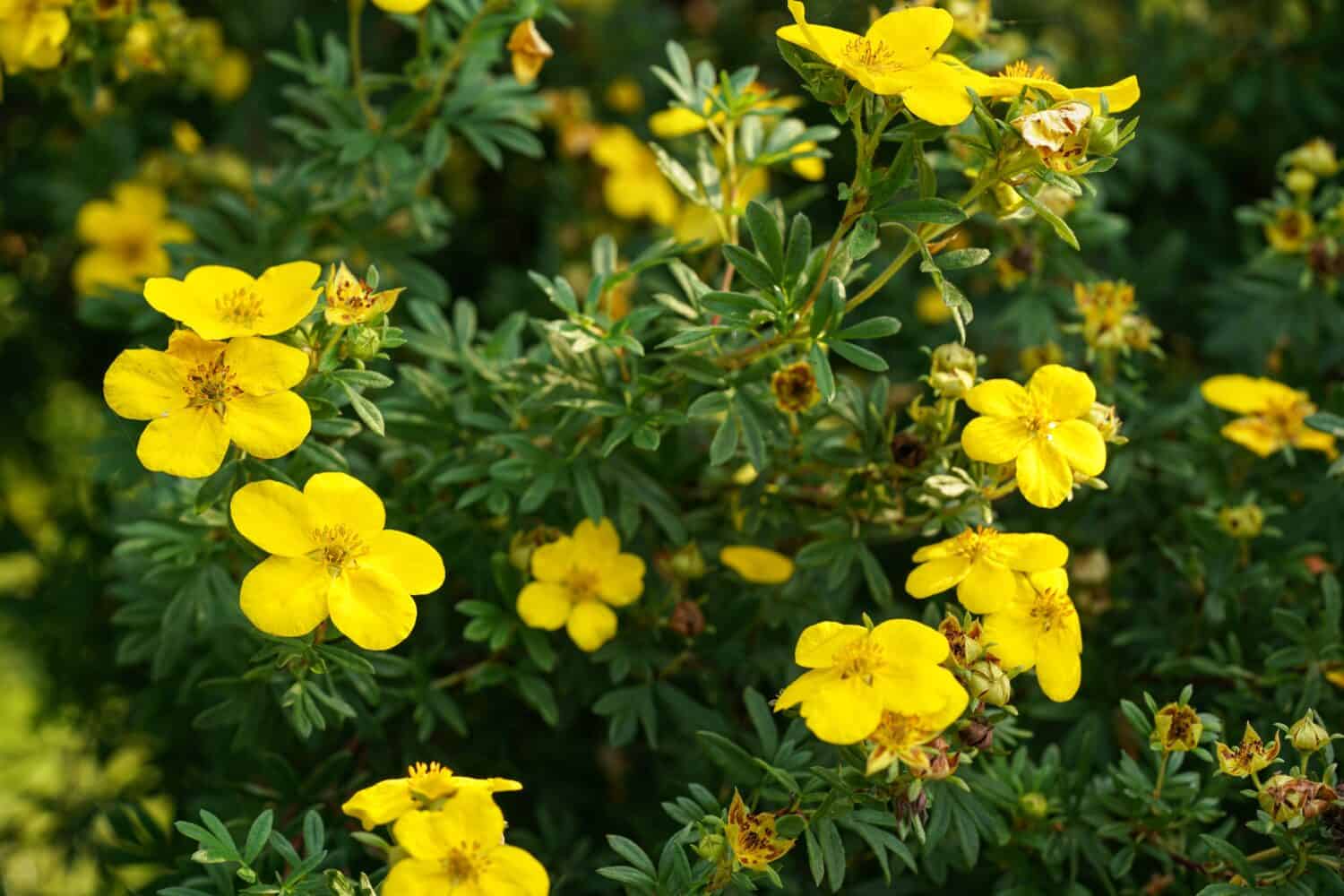
Cinquefoil flowers are native to Mount Washington.
©Lubo Ivanko/Shutterstock.com
Animals Living on Mount Washington
What kind of animals can survive the bitterly cold weather of Mount Washington? The broader area is full of abundant wildlife. In the White Mountains, you may see foxes, woodchucks, grouse, moose, deer, bobcats, coyotes, and even black bears. You may see beautiful birds such as robins, cardinals, bluejays, woodpeckers, doves, and many others making their nests or just passing through. Yet what about Mount Washington itself?
On the mountain, you should look out for mammals in a range of sizes. Look for small rodents, including deer mice, chipmunks, red squirrels, gray squirrels, and other small creatures. People frequently spot bigger mammals such as porcupines, red foxes, skunks, beavers, raccoons, and others. However, in the winter season, wildlife sightings become much more rare. Seeing one of these creatures – or a bigger predator, such as a bobcat or bear – on the summit of Mount Washington is much rare. However, it is not impossible!
Let’s learn more in-depth information about a few of Mount Washington’s inhabitants now.
1. Black Bears
The American black bear is among the most well-known bears that live in North America. These bears typically inhabit forested areas and they are skilled tree climbers, though they also make their way into swampland and are known to go up mountains – including Mount Washington! Black bears typically eat roots, berries, insects, and grasses, though they will sometimes eat fish or other mammals. Black bears have short, thick fur, which can range in color from black to dark red or brown. Black bears are much smaller than many of their other bear relatives, but they have strong senses of smell and short claws that make them nimble climbers.
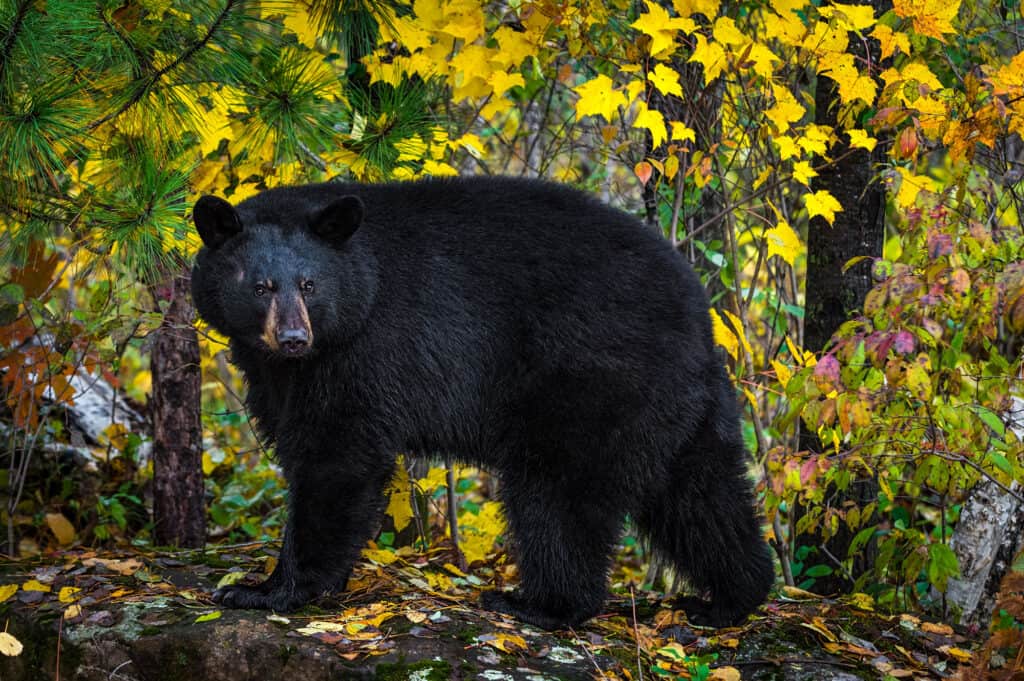
Black bears are omnivorous, meaning they can feed on a wide range of plant and animal matter.
©Holly Kuchera/Shutterstock.com
2. Red Foxes
Red foxes have long snouts, vibrant red fur on their faces, backs, and tails, and white-colored faces and bellies. These creatures are very adaptable, which helps them live across many different habitats, including grasslands, forests, and mountain regions. As opportunistic feeders, foxes are omnivores who will prey on rodents, rabbits, birds, eggs, and other creatures for food. They are also the widest geographic-ranging predator in the world, as they live on every continent but Antarctica and most parts of the U.S. – even in cities.
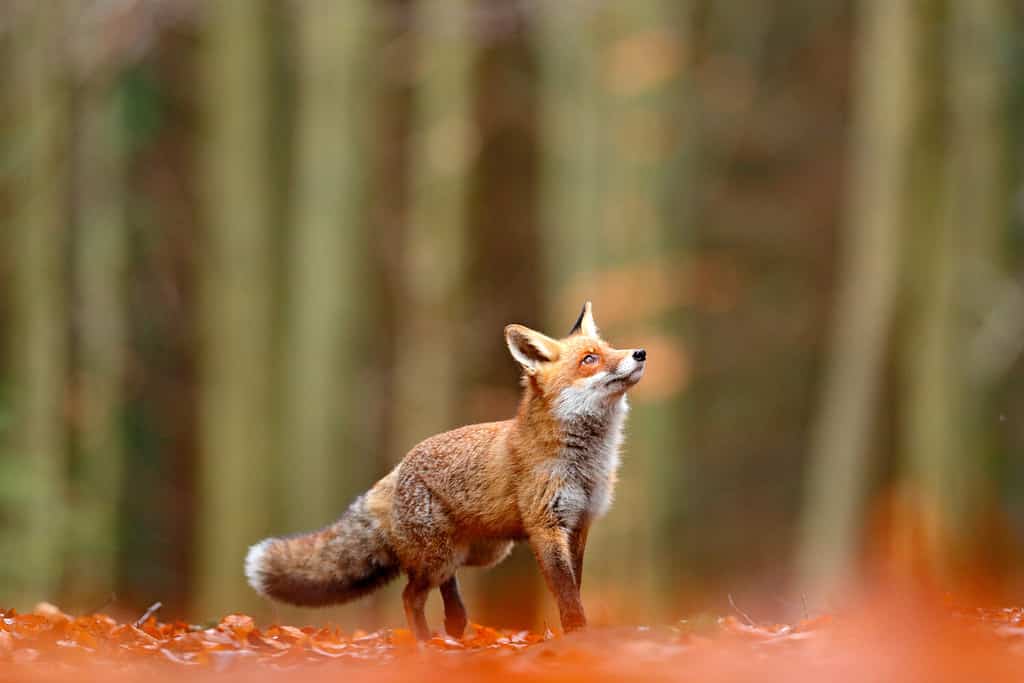
Foxes are among the most adaptable, far-ranging animals in the world.
©Ondrej Prosicky/Shutterstock.com
3. Moose
Did you know that the moose is a member of the deer family? These hulking creatures grow to enormous sizes! Female adult moose weigh about 836 pounds on average, while adult bull (male) moose weigh 1,106 pounds on average. They are also the tallest mammals living in North America, standing six feet or more from the ground to the shoulder. Moose are herbivores who typically survive on diets of leaves and twigs from woody plants, including that willow, birch, maple, pin cherry, and mountain ash trees. When winter comes and hardwood trees lose their foliage, moose will eat balsam fir over the winter. On Mount Washington, you may find them among the woods below the Alpine zone, chomping on the wood.
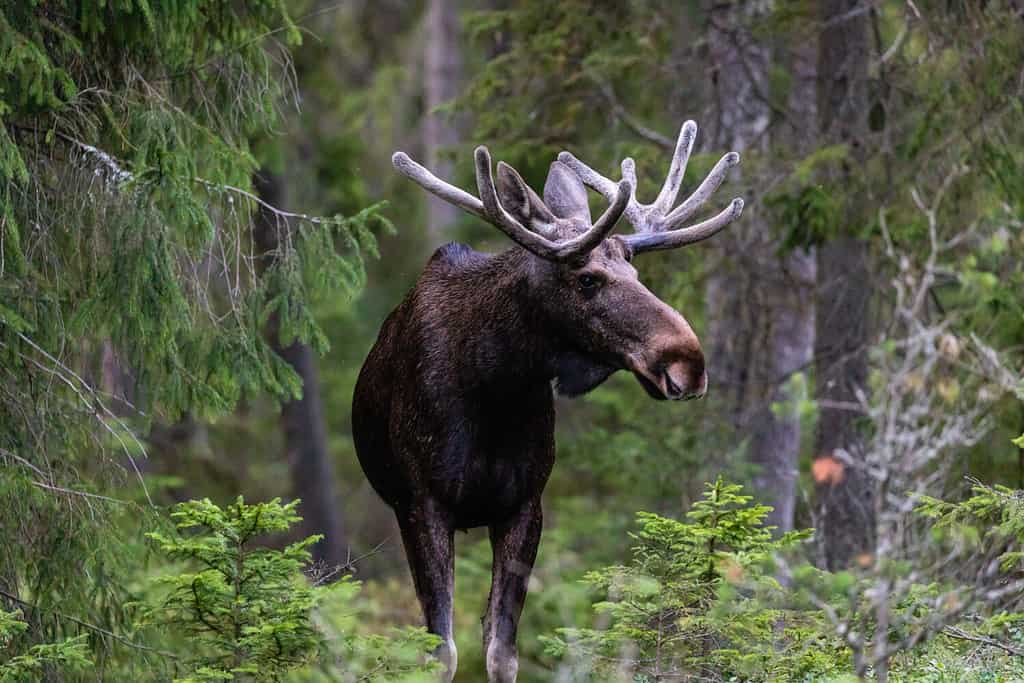
Moose grow to enormous sizes and eat a diet of twigs and leaves from woody plants.
©ArtBBNV/Shutterstock.com
Summary of 3 Animals That Lurk Atop New Hampshire’s Tallest Mountain
| Animal | Fun Fact | |
|---|---|---|
| 1 | Black Bear | They are expert tree-climbers |
| 2 | Red Fox | They live on every continent except Antarctica |
| 3 | Moose | Moose are the tallest animals living in North America |
The photo featured at the top of this post is © Harvey Barrison / Creative Commons – License / Original
Thank you for reading! Have some feedback for us? Contact the AZ Animals editorial team.




